In early 2000, I spent a two weeks in Korea, preaching and visiting friends and my parents (my father’s company had assigned him to a Korean factory making power plants near Pusan). I preached at a couple of churches, one of which had nearly 2000 in attendance at one service, which is the largest congregation to which I’ve preached. This tells of my last day in the country, as I took the train up the Korean peninsula to Seoul and then caught a plane for San Francisco.
Morning train to Seoul
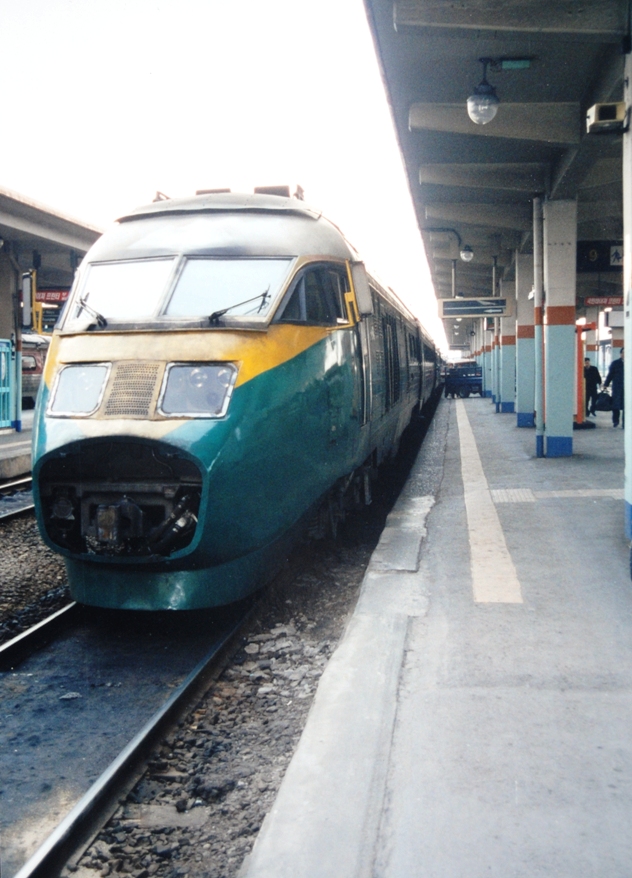
It’s still dark when I board the morning express in Masan, heading toward Seoul. This far south, in this port and industrial city, the weather is chilly and wet but not really cold. I find my seat, stow my two bags overhead (a backpack and a suit bag) and push my jacket up against the window as a pillow. A pretty Korean woman sits next to me. She looks to be in her mid-20s and wears a dress and heels. We smile but when I speak, she shakes her head and says, “No English.”
Shortly afterwards, a whistle blows. The train jerks and my journey begins. I lay my jacket against the window, and my head upon it, alternating my time between looking and reading a book on Korean history and culture. Outside, fog mysteriously shrouds the streets lights.
Dark clouds hid the sunrise; all is gray. As we rush north toward Taegu City, we pass through many rural villages that seem the anti-thesis of Korea’s modern cities. Instead of concrete high-rise apartments, rural homes appear to have changed little over the past century. Most have small courtyards, protected by a high concrete walls. The house sits inside the courtyard, built out from the side of one of the walls. Smoke puffs from the clay pipes above these humble adobes. They use either coal, charcoal or wood fires to heat and to cook. All around the villages are fields for rice or vegetables, onions and cabbage and peppers. At Taegu, the woman next to me gets off.
After pulling out of Taegu, the train heads in a northwestwardly direction to Taejon City. This is mountainous country, but the hills are old and worn, like the Appalachians, not rugged and young like the Rockies. With the trees bare of leaves, I can make out the large nests of magpies.
Burial customs
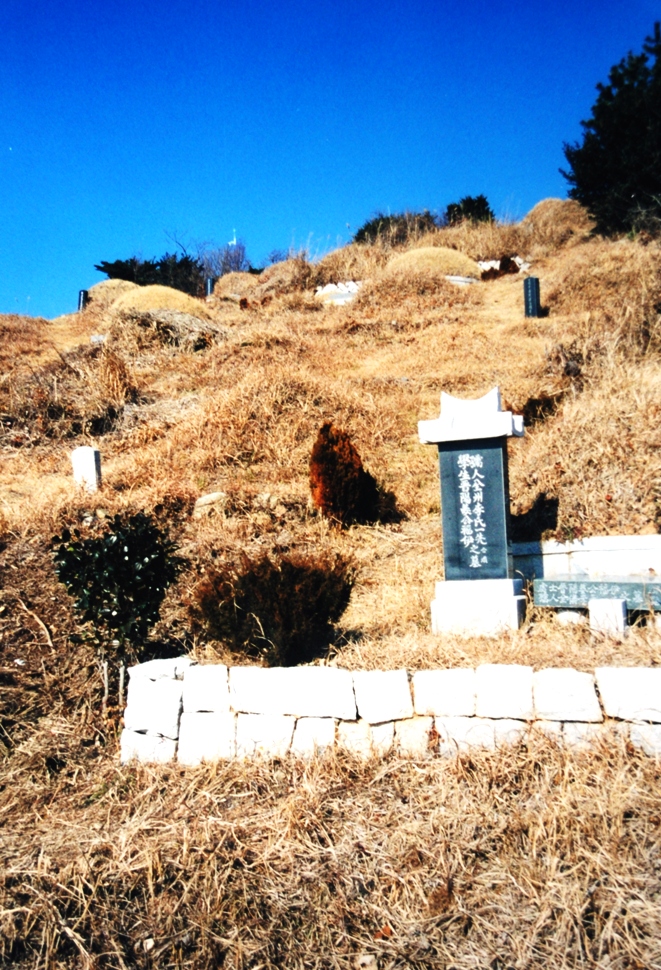
Dotting the hills in the rural areas are many mounts representing burial sites. They place coffins on the ground. Stones and dirt are piled up around it. The government banned this practice because it takes up too much land in a country where land is precious. However, I’m told some people still bury their dead in this manner. Only today, they do it at night, in order not to attract attention.
Yongdong atrocity
Here, snow covers the ground. The roads are icy. At a crossing, just beyond the railroad gate, catch a glimpse of two cars in the ditch and a wrecker working to pull one back onto the highway. Along this section, we pass Yongdong. Near here, during a hasty retreat during the Korean War, scared American soldiers opened fire on civilians, killing many, in a tragedy of the war. Although I am not sure exactly where the site is at, I think about as it’s been in the news recently.
From Taejon, the train races north toward Seoul, traveling through a highly populated area that’s mostly industrial and suburban. High-rise apartments dot the landscape and there are many factories. The train pulls into the station at Seoul a few minutes early. I retrieve my bags and head up an escalator to the main station, worried how I’ll be able to find my ride with so many people. There, at the top of the escalator, I’m pleasantly surprised to see Chanrank and Chang waiting for me. They suggest we stop and have lunch at a café across from the college where Chanrank teaches.
Chop Head Hill
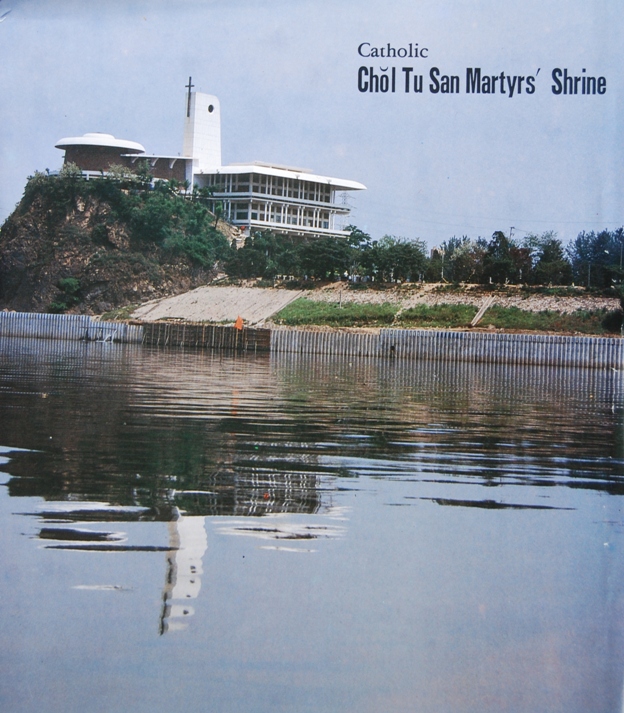
After lunch, as we have four hours before I need to be at the airport; Chang asks if I still want to visit Chop Head Hill. When I had arrived in Korea two weeks early, I had asked Chanrank and her husband about this place. I immediately worried that I had insulted them, but her husband told me more about the place. As he was required to be at the university where he taught this day, Chang came along to take us there. Yes,” I said. I would like an to visit the site.
The three of us seemed to be an odd pair to tour this site scared to Korean Catholics. Like me, Chanrak is Presbyterian. Chang is Buddhist. We wind through the narrow streets north of the Han River in Chang’s car till we finally arrive at the the infamous bluff overlooking the river.
For years, this hill was the site for executions, where the heads of the condemned rolled down into the river. One of the artifacts is a round stone, looking somewhat like a millstone, which was used in the beheadings. The condemned had a rope tied around his or her necks. The rope ran through the hole in the middle of the stone. One of the executors would pull the head of the condemn through the stone while the other used an ax to remove the head from the body.
In the middle of the 1860s, the French tried to gain a foothold in Korea. Sending a gunboat up the Han River, they shelled Seoul. The emperor, seeking a way to cleanse his country of the foreign devils, ask his shaman what to do. They suggested the execution of all Christians in Korea.
Catholic massacre in 1866
In 1866, the Korean emperor ordered the extermination of Korean Christians. At the time, almost all Korean Christians were Catholics. Priest from China converted most of these Christians. Members of churches were bound in chains and dragged across the nation to this place, where they were executed by beheading.
After a decade of tension, in the late 1870s, the French and Korea signed a treaty that guaranteed religious freedom for Korean citizens. In the aftermath of this treaty, Protestants missionaries—especially Presbyterians and Methodist—flooded into the country. In all of Asia, only the Philippines have more Christians than Korea. About 40% of the population claim to be Christian, half of which are Presbyterian. Another 40% of the population is Buddhist. On the hundred anniversary of the martyrdoms, the Catholic Church built a shrine in the honor of the martyrs. Known today as Chou Du San Martyrs’ Shrine or it’s English equivalent, “Chop Head Hill.”
Yongdo Full Gospel Church
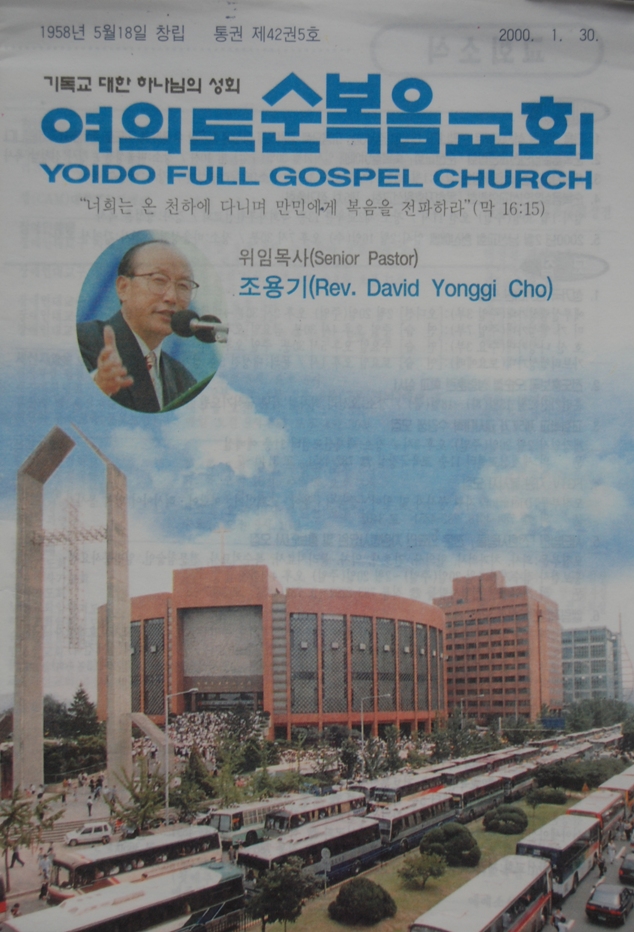
As we still had two hours before we had to be at the airport, we swung by the Yongdo Full Gospel Church. An independent Pentecostal Church with roots in the Assembly of God, they claim to be the largest congregation in the world with 750,000 members. We quickly tour the church. Chang, a Buddhist, seems especially proud of the idea that his country has the world largest church. The sanctuary looks a look like a basketball area and seats nearly 20,000. Although large, I’m left to wonder where everyone worships. Even with their five worship services on Sunday, they would only be able to have 20% of their members member’s present.
After visiting the church, we rush to the airport. After checking bags, we have time for a cup of tea before I have to go through security. I shake Chang’s hand and hug Chanrank, then head through security. In an hour, I’m flying east and sleeping the night away on a Singapore Air flight to San Francisco.
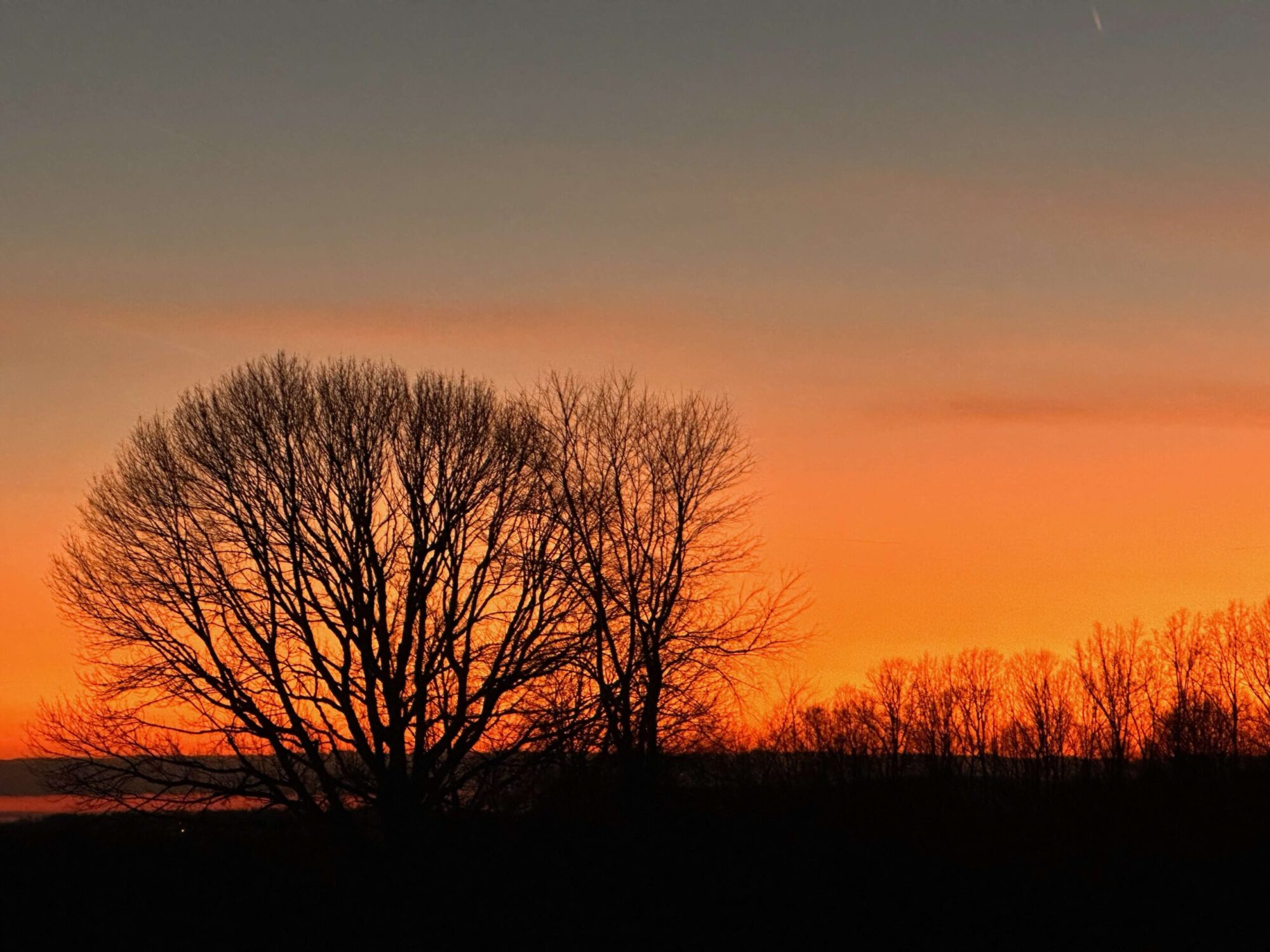
Chop Head Hill would be a disturbing place to visit.
Korea is a fascinating country and culture, the written language is unique in some ways i think
This sounds like a fun trip. I’m eagerly looking forward to the day when we’re all allowed to travel again. That cemetery is pretty. And I didn’t know about the massacre. I don’t know very much about Korea. I mostly just know I like the food.
The Chop Head Hill story gave me chills, just horrifying! I enjoyed your account of the train ride through the countryside. You have an ability to make it come alive, Jeff. I would love to visit Korea. We shall see.
Great story, Jeff. It’s an education. You preached to 2000 people? No pressure. Chop Head Hill? I am glad we don’t have such places here. Very fascinating history and I can imagine it would be pretty stunning to see.
are you sure we don’t have such places here? Sadly, such is an example of our inhumanity to one another.
Wow, visiting Korea must have been so fascinating1
It was a good trip. Korea is a lovely country.
Love your story!!
Good afternoon Jeff, I hope your weather is a lot nicer than ours right now! Brr it’s the frozen tundra here, but this post of yours really warmed my heart and soul. Thanks for sharing this experience and great captures. Take good care.
We have had some snow and ice, but not nearly as cold as MN!
Thanks, Timm. I hope you are staying well.
Nice post! South Korea is fascinating – such a troubled country for so long but one definitely finding its footing on the world stage in the current century. BTS and the other K-Pop groups represent a more extraordinary cultural phenomenon than most people appreciate. Korea is suddenly cool, not unlike the way England became so with the Beatles and James Bond in the early ’60s. I’d challenge anyone who might claim they saw that coming!
I envy your extended visit. I only had about 24 hours in Seoul. I made the most of it but was keenly aware I’d barely scratched the surface.
My father had worked in Korea some in the late 70s and early 80s. He was amazed at the progress the country had made when he moved there in 1998 (just in time for the Asian financial crisis).
Hey Jeff. I love Hankuk, Korea, where I spent 3 years in Jeonju and Taejon. Landed Aug 22, 1976 day of the ax tree incident in the DMZ. My Dad flew supplies there during Korean War. Buddhist temples have the prettiest locations. Last year spent only a day there with my son and Korean friend Chung Soon on the way to Chiangmai. That day was only snow I have seen. Yesterday was Chinese/Korean New Year. Sae Hae Bok Mango padaseiyo
That would have been a good time to arrive in Korea, with the tree incident! I’d forgotten you’d spent time in Korea.
Korean Buddhist temples are generally in the mountains. I think it was in the 15th Century, the government made Confucianism (a philosophy) the official religion and also instituted the Confucian government exam system as a way to end corruption. At this point, many of the Buddhist temples were destroyed and they were forced into the countryside, generally high in the mountains. One of my fondest memories was staying in a traditional styled house in Wonju and waking at 4 AM to the bells pealing down from the temple some 2000 feet above the city. Maybe I’ll post that story next.
Interesting story, I didn’t know about that ❤
Foreign travel is always interesting.
Enjoyed this, Jeff. Thank you. I was able to live in Japan for about a year when my dad was stationed there and loved the culture. I really enjoy a lot of the ways they do things.
I have spent three weeks in Japan. My parents and younger brother moved to Japan when I was a senior in college (so I didn’t get a chance to live there, but I was able to visit).
2000 people in attendance? I do do well talking in front of a lot of people but good for you being able to do that.
One of the most amazing things is that this church, instead of an organ, had an orchestra pit that housed about 30 instrumentalist. Of course, I was speaking English and it was being translated in Korea. In the other churches, I had a sermon that was translated into Korean and handed out to those who didn’t know English, so they could read it while I preached.
Chop Head Hill is disturbing, but I’m always glad to learn a little history.
The name is a little foreboding. Don’t think I’d want a home in that neighborhood.
I spent a few days in South Korea. It is a wonderful country. What an experience for you.
It is a wonderful country. I could have spent more time there. Of course, it’s cold in the winter up north, but where my parents lived down south, it was quite mild.
There is a lot of Korean history that I wasn’t familiar with here. Makes me want to find a good book on the subject.
Pearl Buck’s “The Living Reed” is a novel but provides a lot of history into the country.